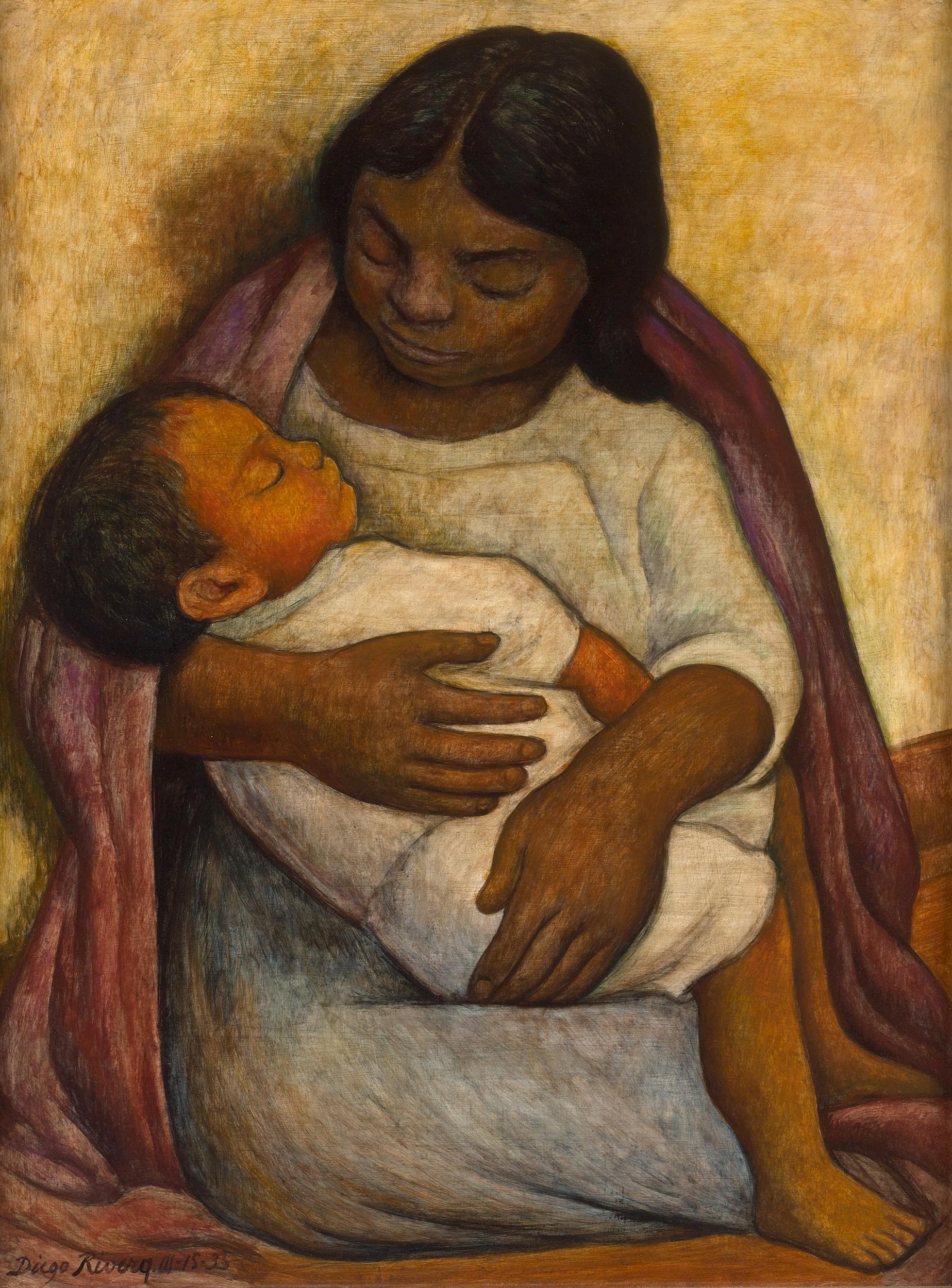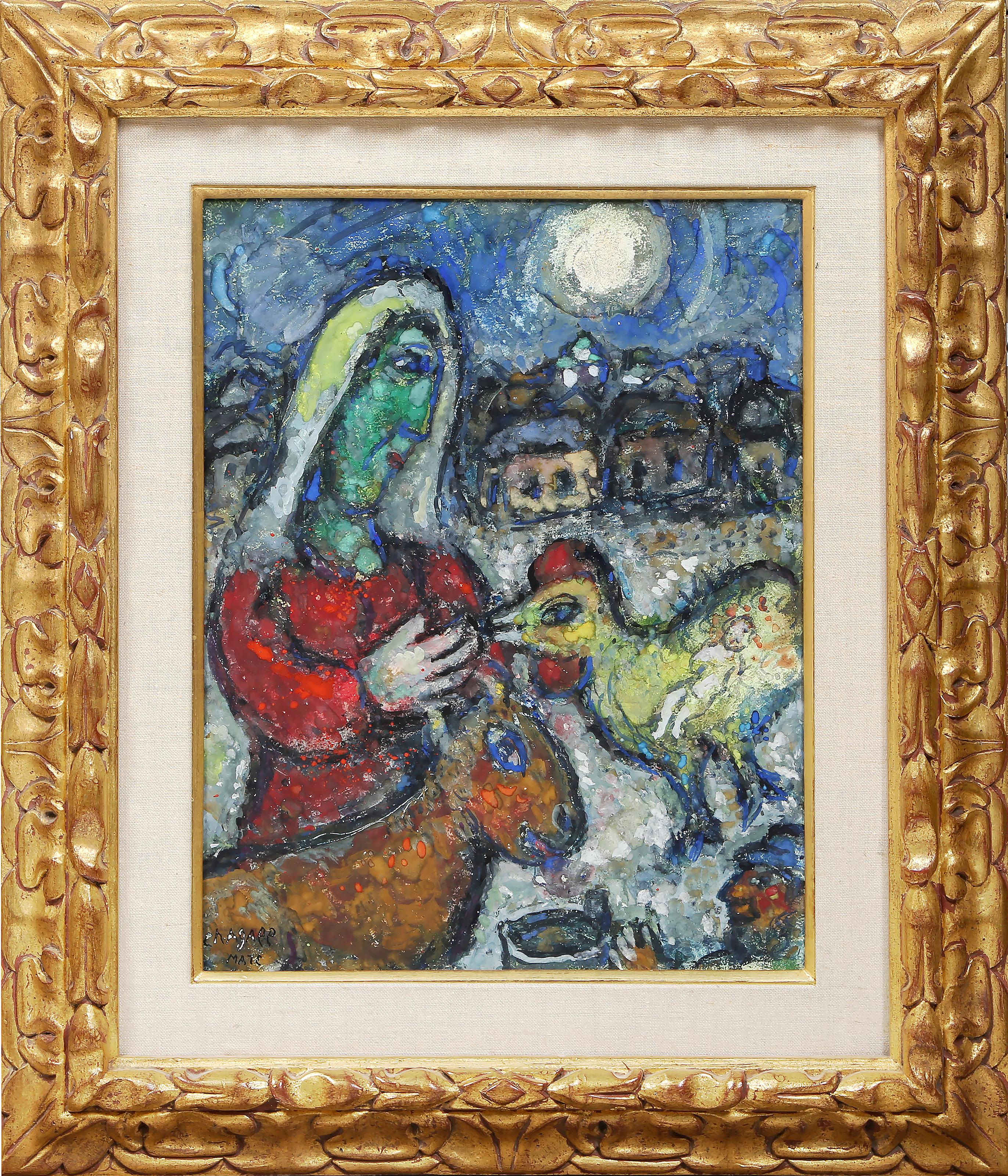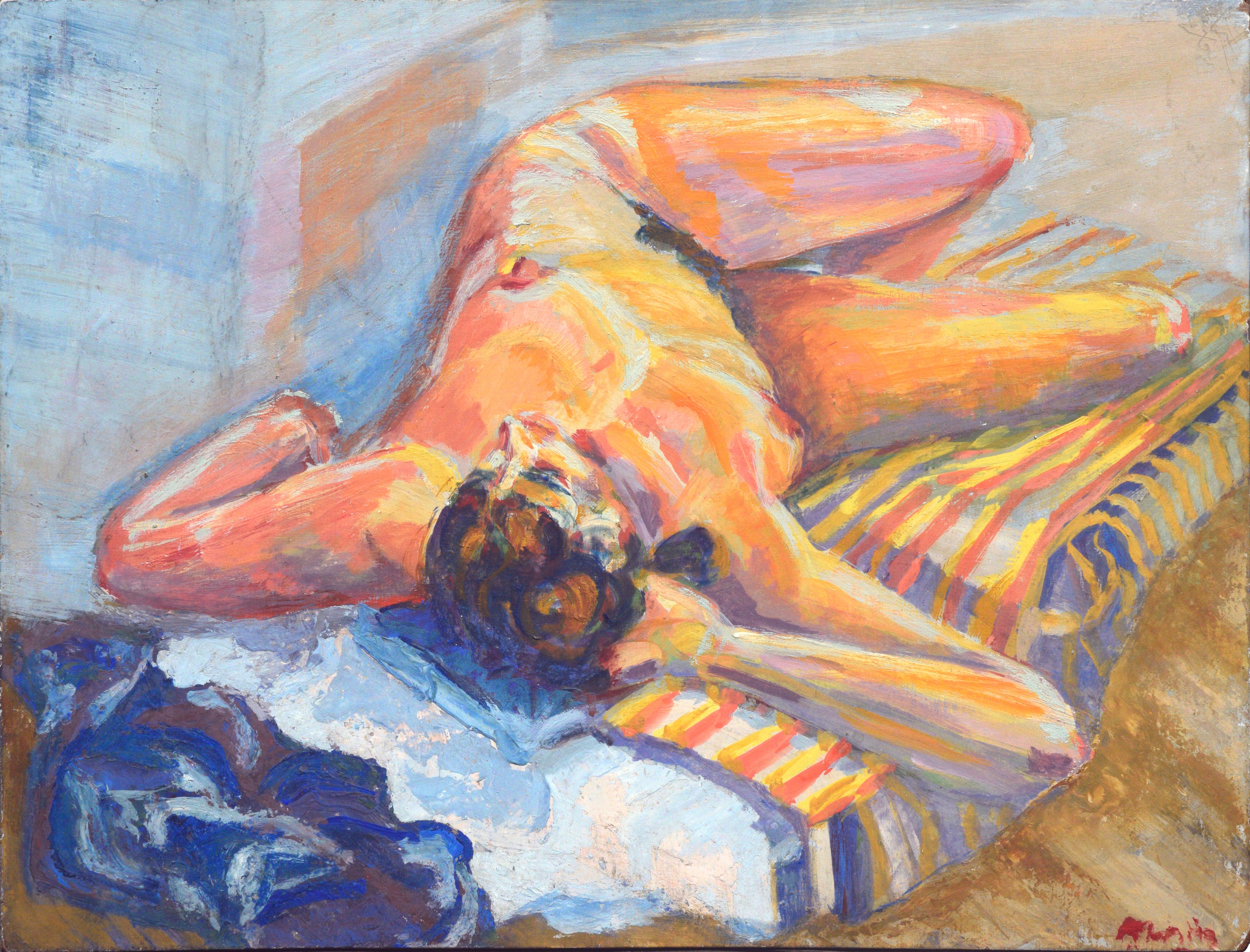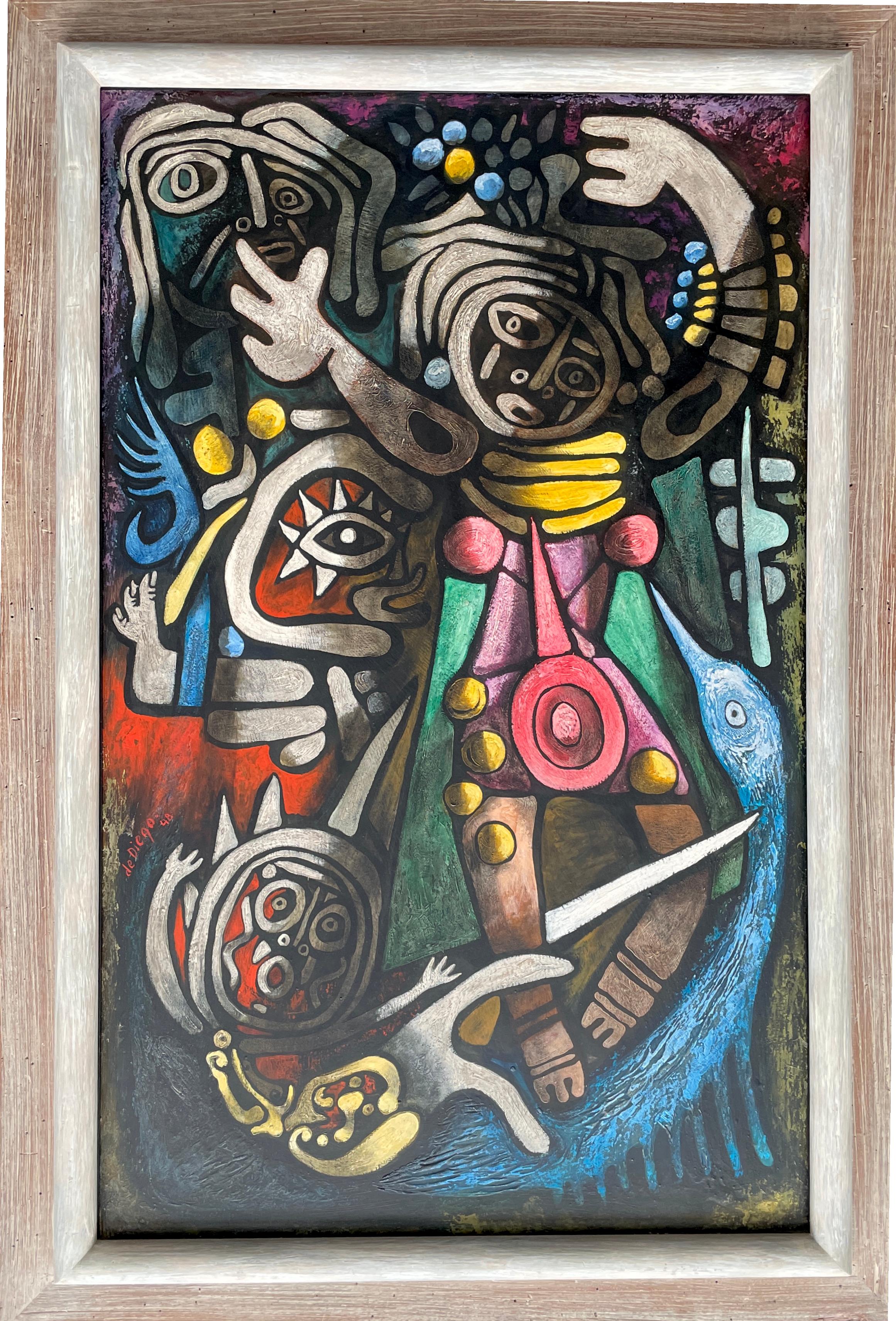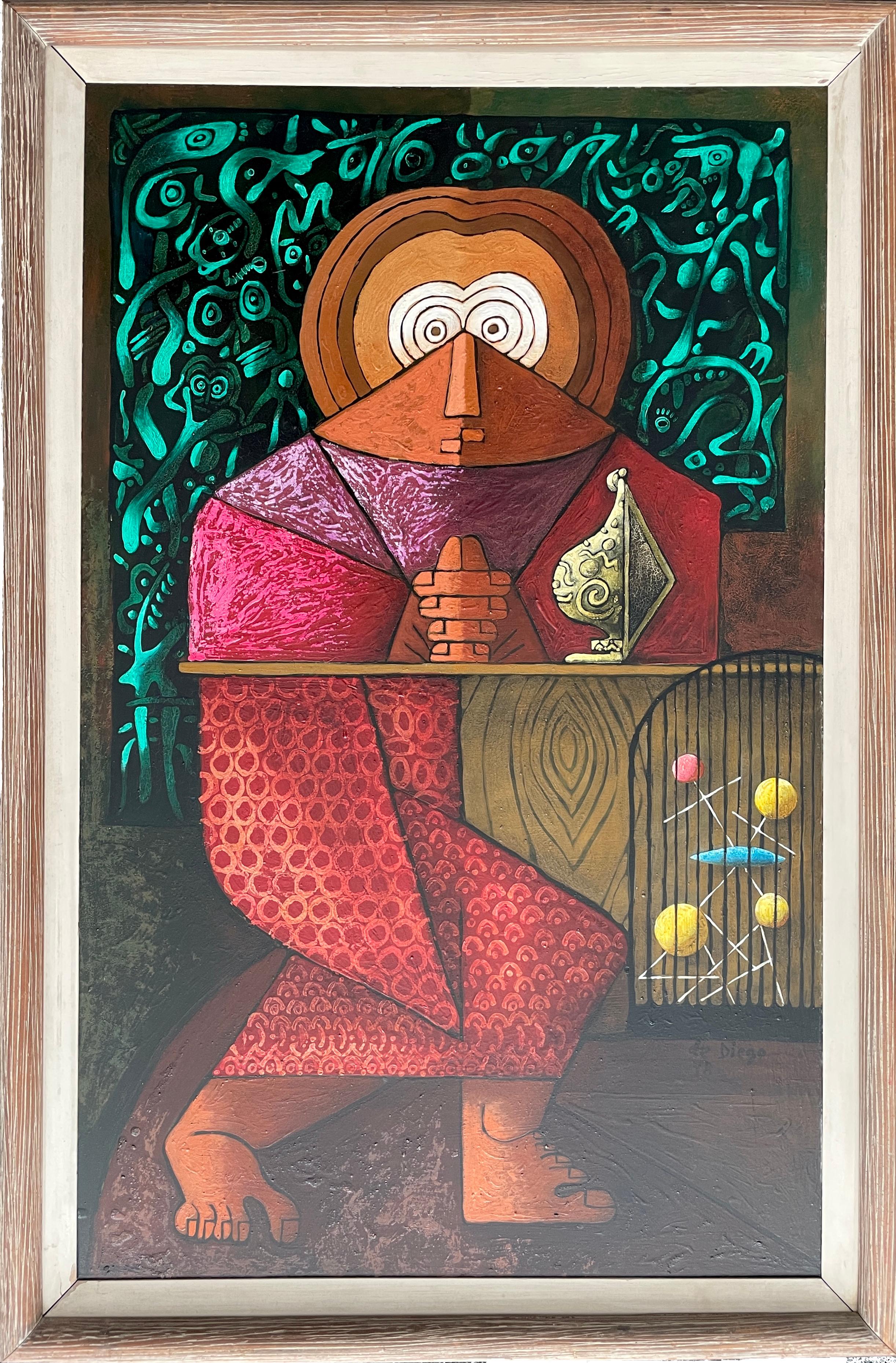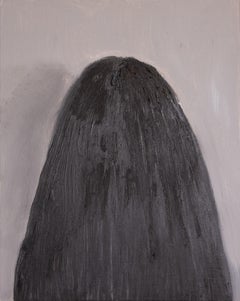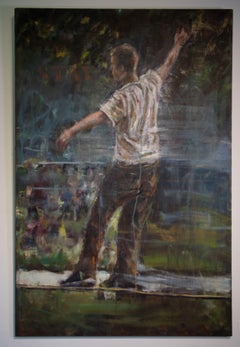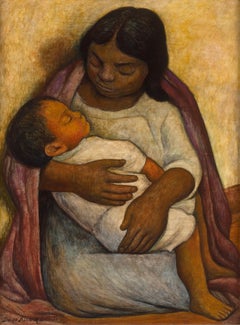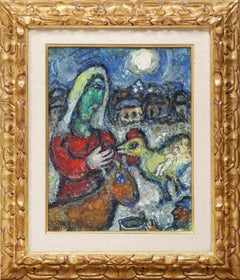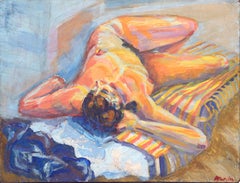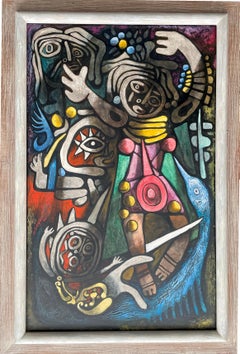Items Similar to Ballerina dancer on vivid yellow and orange background
Want more images or videos?
Request additional images or videos from the seller
1 of 6
Antoon CatrieBallerina dancer on vivid yellow and orange backgroundunknown
unknown
About the Item
Antoon Catrie (Ronsele, Belgium, 1924-1977), ‘Ballerina dancer’, oil on panel – tempera technique like in icons. The work is signed.
- Creator:Antoon Catrie (1924 - 1977, Belgian)
- Creation Year:unknown
- Dimensions:Height: 15.95 in (40.5 cm)Width: 8.27 in (21 cm)Depth: 0.79 in (2 cm)
- More Editions & Sizes:unique piecePrice: $524
- Medium:
- Movement & Style:
- Period:
- Condition:
- Gallery Location:Oostende, BE
- Reference Number:1stDibs: LU2641213285502
About the Seller
5.0
Vetted Professional Seller
Every seller passes strict standards for authenticity and reliability
1stDibs seller since 2023
5 sales on 1stDibs
- ShippingRetrieving quote...Shipping from: Gent, Belgium
- Return Policy
Authenticity Guarantee
In the unlikely event there’s an issue with an item’s authenticity, contact us within 1 year for a full refund. DetailsMoney-Back Guarantee
If your item is not as described, is damaged in transit, or does not arrive, contact us within 7 days for a full refund. Details24-Hour Cancellation
You have a 24-hour grace period in which to reconsider your purchase, with no questions asked.Vetted Professional Sellers
Our world-class sellers must adhere to strict standards for service and quality, maintaining the integrity of our listings.Price-Match Guarantee
If you find that a seller listed the same item for a lower price elsewhere, we’ll match it.Trusted Global Delivery
Our best-in-class carrier network provides specialized shipping options worldwide, including custom delivery.More From This Seller
View AllFugate - (painting of an oldtimer car from the 60s during night)
Located in Oostende, BE
Oil on canvas painting of an oldtimer car, during night time.
Category
2010s Modern Figurative Paintings
Materials
Canvas
Oil on canvas painting of a blue lampshade on black background 'Lambade in blue'
Located in Oostende, BE
Oil on canvas painting of a blue lampshade on black background 'Lambade in blue', by Jean De Groote (BE)
Category
2010s Modern Figurative Paintings
Materials
Canvas
Il N’y A Pas De Vision Sans Pensée - minimalistic oil on canvas painting
Located in Oostende, BE
oil on canvas painting of the back of a woman's head
Category
2010s Modern Figurative Paintings
Materials
Canvas
Oil on canvas painting of a balancing man. The artwork is called 'Stay'
Located in Oostende, BE
Oil on canvas painting of a balancing man. The artwork is called 'Stay'
Category
Early 2000s Modern Figurative Paintings
Materials
Canvas
Oil on canvas painting of a naked woman in a smokey blue setting by Hans Defer
Located in Oostende, BE
Oil on canvas painting of a naked woman in a smokey blue setting by Hans Defer
Category
2010s Modern Figurative Paintings
Materials
Canvas
Oil on canvas painting of a man and a bird, called 'L'homme et l'oiseau'
Located in Oostende, BE
Unique painting of a man hiding behind a wall and bird. Especially the bright yellow stands out and gives this painting a warm vibe.
Category
2010s Modern Figurative Paintings
Materials
Canvas
You May Also Like
Delfina y Dimas by Diego Rivera
By Diego Rivera
Located in New Orleans, LA
Diego Rivera
1886-1957 Mexican
Delfina y Dimas
Signed and dated 1935
Tempera on masonite
In the intimate masterwork Delfina y Dimas, the great Diego Rivera illustrates all of his...
Category
20th Century Modern Figurative Paintings
Materials
Masonite, Tempera
Paysanne Au Visage Vert, Original Modern Tempera Painting by Marc Chagall
By Marc Chagall
Located in Long Island City, NY
The Modern Russian artist Marc Chagall often took a very literal approach to naming his art. The title of this unique tempera and gouache painting on masonite translates very simply ...
Category
1970s Modern Figurative Paintings
Materials
Masonite, Tempera, Gouache
Modernist Reclining Female Nude Figurative
Located in Soquel, CA
Modernist reclining female nude figurative painting by an unknown artist (American, 20th Century). This vivid late 20th-century figural piece featur...
Category
20th Century American Modern Nude Paintings
Materials
Tempera, Masonite
Ceremonial Dancers oil and tempera painting by Julio De Diego
By Julio de Diego
Located in Hudson, NY
Artwork measures 48" x 30" and framed 56 ¼" x 38 ¼" x 3"
Provenance:
John Heller Gallery, NYC, circa 1975 (label verso)
The artist's daughter
Corbino Galleries, Sarasota, FL (1990)...
Category
1940s Modern Abstract Paintings
Materials
Masonite, Oil, Tempera
The Magician oil and tempera painting by Julio de Diego
By Julio de Diego
Located in Hudson, NY
Julio De Diego’s Atomic Series paintings made an extraordinary statement regarding the shock and fear that accompanied the dawn of the nuclear age. In the artist’s own words, “Scientists were working secretly to develop formidable powers taken from the mysterious depths of the earth - with the power to make the earth useless! Then, the EXPLOSION! . . . we entered the Atomic Age, and from there the neo-Atomic war begins. Explosions fell everywhere and man kept on fighting, discovering he could fight without flesh.”
To execute these works, De Diego developed a technique of using tempera underpainting before applying layer upon layer of pigmented oil glazes. The result is paintings with surfaces which were described as “bonelike” in quality. The forms seem to float freely, creating a three-dimensional visual effect. In the 1954 book The Modern Renaissance in American Art, author Ralph Pearson summarizes the series as “a fantastic interpretation of a weighty theme. Perhaps it is well to let fantasy and irony appear to lighten the devastating impact. By inverse action, they may in fact increase its weight.”
Exhibited
1964 Marion Koogler McNay Art Institute, San Antonio, Texas
This work retains its original frame which measures 54" x 42" x 2"
About this artist: Julio De Diego crafted a formidable persona within the artistic developments and political struggles of his time. The artist characterized his own work as “lyrical,” explaining, “through the years, the surrealists, the social-conscious painters and the others tried to adopt me, but I went my own way, good, bad or indifferent.” [1] His independence manifested early in life when de Diego left his parent’s home in Madrid, Spain, in adolescence following his father’s attempts to curtail his artistic aspirations. At the age of fifteen he held his first exhibition, set up within a gambling casino. He managed to acquire an apprenticeship in a studio producing scenery for Madrid’s operas, but moved from behind the curtains to the stage, trying his hand at acting and performing as an extra in the Ballet Russes’ Petrouchka with Nijinsky. He spent several years in the Spanish army, including a six-month stretch in the Rif War of 1920 in Northern Africa. His artistic career pushed ahead as he set off for Paris and became familiar with modernism’s forays into abstraction, surrealism, and cubism.
The artist arrived in the U.S. in 1924 and settled in Chicago two years later. He established himself with a commission for the decoration of two chapels in St. Gregory’s Church. He also worked in fashion illustration, designed magazine covers and developed a popular laundry bag for the Hotel Sherman. De Diego began exhibiting through the Art Institute of Chicago in 1929, and participated in the annual Chicago Artists Exhibitions, Annual American Exhibitions, and International Water Color Exhibitions. He held a solo exhibition at the Art Institute of Chicago in the summer of 1935. Though the artist’s career was advancing, his family life had deteriorated. In 1932 his first marriage dissolved, and the couple’s young daughter Kiriki was sent to live with friend Paul Hoffman.
De Diego continued to develop his artistic vocabulary with a growing interest in Mexican art. He traveled throughout the country acquainting himself with the works of muralists such as Carlos Merida, and also began a collection of small native artifacts...
Category
1940s American Modern Abstract Paintings
Materials
Masonite, Oil, Tempera
St. Atomic oil and tempera painting by Julio de Diego
By Julio de Diego
Located in Hudson, NY
Julio De Diego’s Atomic Series paintings made an extraordinary statement regarding the shock and fear that accompanied the dawn of the nuclear age. In the artist’s own words, “Scientists were working secretly to develop formidable powers taken from the mysterious depths of the earth - with the power to make the earth useless! Then, the EXPLOSION! . . . we entered the Atomic Age, and from there the neo-Atomic war begins. Explosions fell everywhere and man kept on fighting, discovering he could fight without flesh.”
To execute these works, De Diego developed a technique of using tempera underpainting before applying layer upon layer of pigmented oil glazes. The result is paintings with surfaces which were described as “bonelike” in quality. The forms seem to float freely, creating a three-dimensional visual effect. In the 1954 book The Modern Renaissance in American Art, author Ralph Pearson summarizes the series as “a fantastic interpretation of a weighty theme. Perhaps it is well to let fantasy and irony appear to lighten the devastating impact. By inverse action, they may in fact increase its weight.”
Exhibited
1950 University of Illinois at Urbana "Contemporary American Painting"
1964 Marion Koogler McNay Art Institute, San Antonio, Texas
This work retains its original frame which measures 54" x 36" x 2".
About this artist: Julio De Diego crafted a formidable persona within the artistic developments and political struggles of his time. The artist characterized his own work as “lyrical,” explaining, “through the years, the surrealists, the social-conscious painters and the others tried to adopt me, but I went my own way, good, bad or indifferent.” [1] His independence manifested early in life when de Diego left his parent’s home in Madrid, Spain, in adolescence following his father’s attempts to curtail his artistic aspirations. At the age of fifteen he held his first exhibition, set up within a gambling casino. He managed to acquire an apprenticeship in a studio producing scenery for Madrid’s operas, but moved from behind the curtains to the stage, trying his hand at acting and performing as an extra in the Ballet Russes’ Petrouchka with Nijinsky. He spent several years in the Spanish army, including a six-month stretch in the Rif War of 1920 in Northern Africa. His artistic career pushed ahead as he set off for Paris and became familiar with modernism’s forays into abstraction, surrealism, and cubism.
The artist arrived in the U.S. in 1924 and settled in Chicago two years later. He established himself with a commission for the decoration of two chapels in St. Gregory’s Church. He also worked in fashion illustration, designed magazine covers and developed a popular laundry bag for the Hotel Sherman. De Diego began exhibiting through the Art Institute of Chicago in 1929, and participated in the annual Chicago Artists Exhibitions, Annual American Exhibitions, and International Water Color Exhibitions. He held a solo exhibition at the Art Institute of Chicago in the summer of 1935. Though the artist’s career was advancing, his family life had deteriorated. In 1932 his first marriage dissolved, and the couple’s young daughter Kiriki was sent to live with friend Paul Hoffman.
De Diego continued to develop his artistic vocabulary with a growing interest in Mexican art. He traveled throughout the country acquainting himself with the works of muralists such as Carlos Merida, and also began a collection of small native artifacts...
Category
1940s American Modern Abstract Paintings
Materials
Masonite, Oil, Tempera
Recently Viewed
View AllMore Ways To Browse
Ballerina Dance
Ballerina Dancer
Vintage Ballerina Painting
Mid Century Ballerina
Nancy Graves
Nelson Brothers
Pendulum Painting
Shadow Puppets
Shepard Fairey Oil
Signed Peter Max Posters
Sous Bois
The Louvre Antiques
Used Buggies
Worth Avenue Painting
African Medicine
Alfred Wallis
Allegorical Old Masters
Audrey Wood
